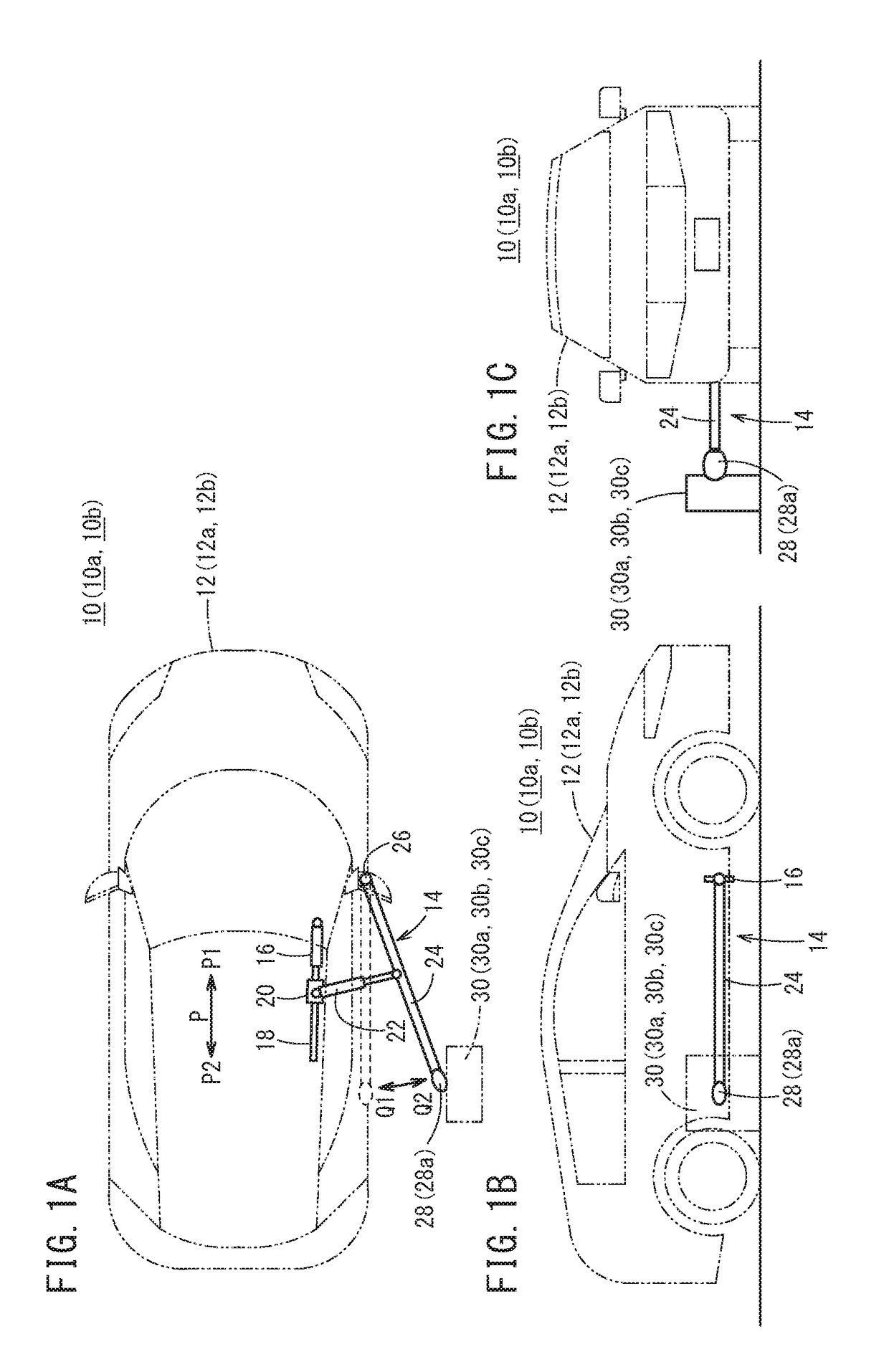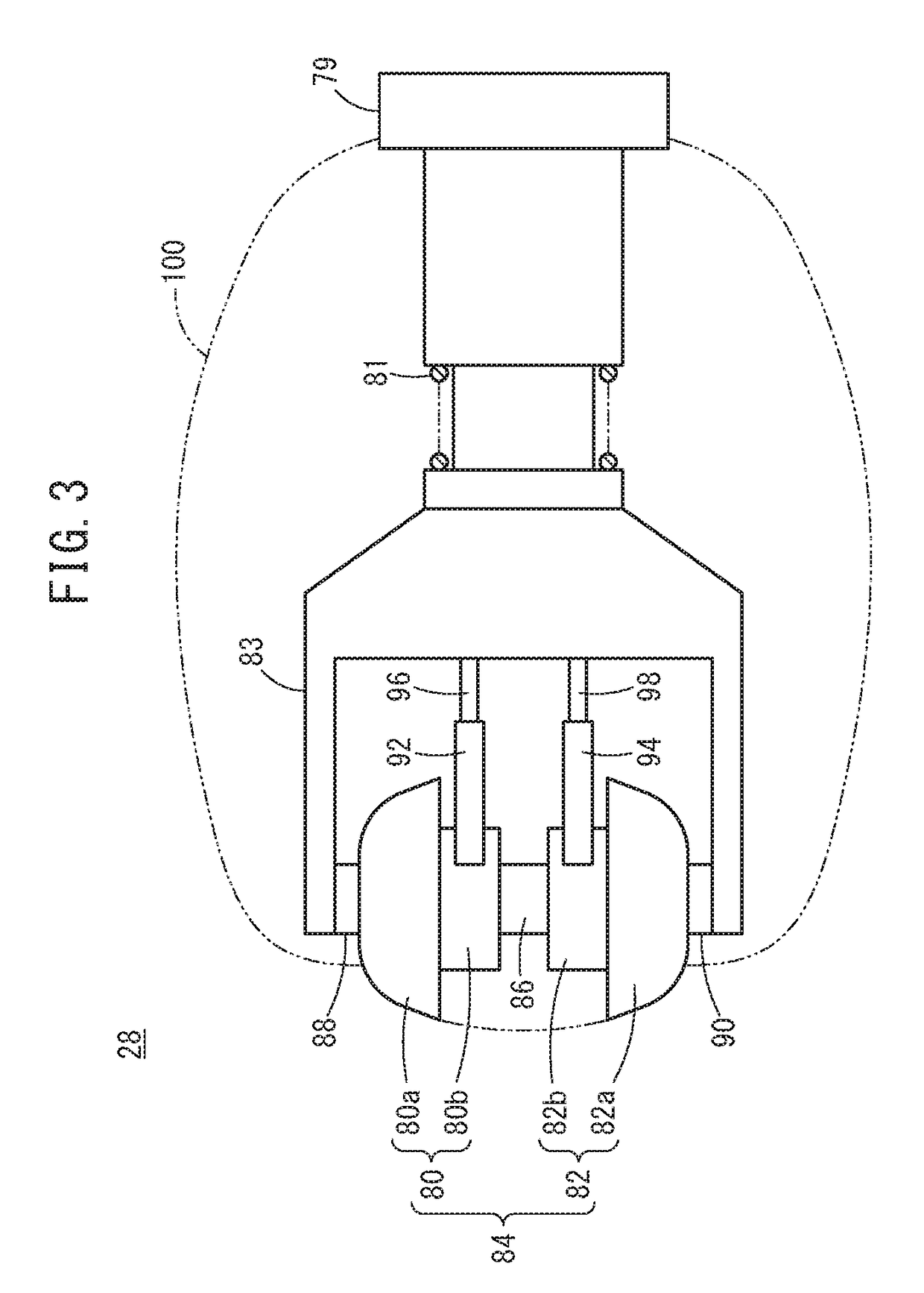Contact charging system, power feeding device, power receiving device, and contact charging method
- Summary
- Abstract
- Description
- Claims
- Application Information
AI Technical Summary
Benefits of technology
Problems solved by technology
Method used
Image
Examples
first embodiment
2. First Embodiment
[0046]Using FIGS. 2 to 4, the power feeding device 30 and the power receiving head 28 used in the contact charging system 10 according to the first embodiment are described. In the first embodiment, in charging of the high-voltage battery 102, a feeding-side motor 38 is rotated in a state in which the power feeding terminal 36 and the power receiving terminal 84 are pressed against each other, thereby transmitting motive power from the power feeding terminal 36 to the power receiving terminal 84 to cause both the power feeding terminal 36 and the power receiving terminal 84 to rotate.
[2.1. Configuration of Power Feeding Device 30]
[0047]Using FIGS. 2 and 4, the configuration of the power feeding device 30 is described. The power feeding device 30 according to the first embodiment includes the power feeding terminal 36 having a pair of terminals capable of rotating about a first rotation shaft (a first upper rotation shaft 52, a first lower rotation shaft 56), namel...
second embodiment
3. Second Embodiment
[0068]Using FIGS. 6 to 8, a power feeding device 30a and a power receiving head 28a used in a contact charging system 10a according to the second embodiment (see FIG. 1A, for instance) are described. In the second embodiment, in charging of the high-voltage battery 102, a receiving-side motor 110 is rotated in a state in which the power feeding terminal 36 and the power receiving terminal 84 are pressed against each other, thereby transmitting motive power from the power receiving terminal 84 to the power feeding terminal 36 to cause both the power feeding terminal 36 and the power receiving terminal 84 to rotate.
[3.1. Configuration of Power Feeding Device 30a]
[0069]Using FIGS. 6 and 8, the configuration of the power feeding device 30a is described. The power feeding device 30a according to the second embodiment includes the power feeding terminal 36 having a pair of terminals capable of rotating about the first rotation shaft (the first upper rotation shaft 52, ...
third embodiment
4. Third Embodiment
[0083]In the third embodiment, a power feeding device 30b and an electric vehicle 12b are interconnected via wireless communication, and a command signal for applying voltage and a command signal for stopping voltage application are sent from the side of the electric vehicle 12b to the side of the power feeding device 30b.
[4.1. Configuration of Power Feeding Device 30b]
[0084]Using FIG. 9, the configuration of the power feeding device 30b is described. The configuration of the power feeding device 30b has many in common with that of the power feeding device 30a according to the second embodiment shown by FIG. 8. Thus, for the power feeding device 30b shown by FIG. 9, components that are common to the power feeding device 30a are given the same reference characters and are not described again. The power feeding device 30b shown by FIG. 9 is different from the power feeding device 30a shown by FIG. 8 in that the power feeding device 30b uses a feeding-side communica...
PUM
 Login to View More
Login to View More Abstract
Description
Claims
Application Information
 Login to View More
Login to View More - R&D
- Intellectual Property
- Life Sciences
- Materials
- Tech Scout
- Unparalleled Data Quality
- Higher Quality Content
- 60% Fewer Hallucinations
Browse by: Latest US Patents, China's latest patents, Technical Efficacy Thesaurus, Application Domain, Technology Topic, Popular Technical Reports.
© 2025 PatSnap. All rights reserved.Legal|Privacy policy|Modern Slavery Act Transparency Statement|Sitemap|About US| Contact US: help@patsnap.com



